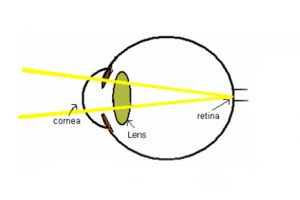
Dry Eye Basics
February 9, 2023
Optics Formulas
May 19, 2023Cataract Surgery Implants and IOL Calculations
Associated Courses
$15.00
Categories: AOA Certified, Eye Courses
Description
This course is intended for intermediate and advanced levels. The course covers information on choosing IOLs in difficult situations like post refractive surgery patients- with many methods described.
After completing this course the student should be able to do the following:
- Discuss why and when IOL calculation is necessary
- Identify when an A Scan might need to be done on a pseudophakic patient
- Describe what steps should be taken for an A Scan measurement on a pseudophakic eye
- List the steps that need to be taken for an A Scan measurement on a silicone oil filled eye
- Identify how a posterior staphyloma can affect an axial length measurement
- Describe the relationship between refractive error and IOL power when calculating the difference in IOL power needed to convert a distance calculated IOL to a near power IOL
- List 4 types of multifocal IOLs
- Describe the following IOL designs: aspheric, blue light filtering, piggyback IOL, phakic IOL, and Light Adjustable Lenses
- Describe the following types of phakic IOL support systems: sulcus placement, angle supported, iris supported
- Identify the 2 types of IOL calculation formulas
- List some theoretical formulas used today for IOL calculation
- Identify the most commonly used regression formula used today
- Describe how to calculate IOL power for a sulcus placed IOL compared to an IOL calculated for capsular bag placement
- Describe when a piggy back IOL might be needed
- Describe the best practice for use when cataract surgery and corneal transplant surgery are both necessary
- List 5 methods useful for IOL calculation in post myopic refractive surgery patients
- Identify methods useful for IOL calculation in post myopic refractive surgery patients on whom you do not have any pre refractive surgery data
- List 3 methods useful for IOL calculation in post hyperopic refractive surgery patients
- Identify how many corneal rings should be measured to find the average corneal power on the Atlas Corneal topographer in Drs. Wang, Jackson, and Koch’s method of IOL calculation for post hyperopic refractive surgery patients
- Describe how optimizing post operative results, IOL calculation constants, and corrections factors helps improve future results
- List 3 constants that are used in IOL calculations
This course should take 1 hour to complete.
This course has been approved by the AOA Commission on Paraoptometric Certification (CPC) for continuing education credit for use toward paraoptometric certification renewal.
Related products
-
Pupil Function Simulation
$15.00 -
Optics Overview
$20.00




